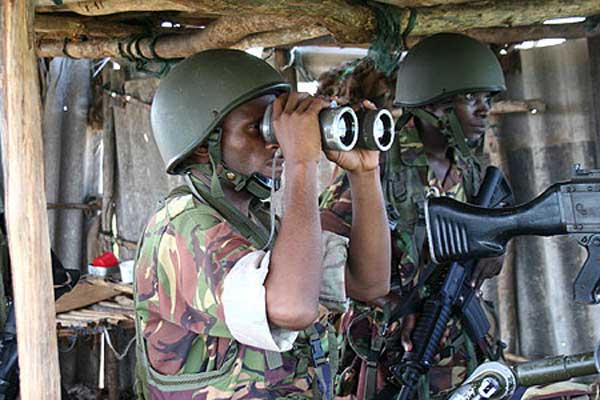Bring Kenyan troops home from Somalia

On January 15, 2016, Kenyans reacted with anger and horror at the news that al-Shabaab militants had attacked Kenyan troops at a military outpost in El Adde, southern Somalia, who were part of the African Union mission for Somalia (AMISOM) to stabilize the country.
The attackers to have claimed killed dozens of Kenyan soldiers and captured scores, including the commander of the outpost. Up to date, the Kenyan military has not released any details about the casualties or the fate of missing soldiers, although some reprts put the death toll at 100.
The El Adde attack raised serious questions about Kenya’s efforts in Somalia. Why are Kenyan troops still in Somalia? What are they trying to accomplish? Why was the military outpost vulnerable? And when will the Kenyan troops come home?
In 2011, Kenyan troops went to Somalia in an operation dubbed “Operation Linda Nchi” to secure its northeast border with Somalia after a series of attacks and kidnappings of tourists and aid workers by al-shabaab and criminal bandits.
Until the deadly El Adde attack, things were going well for Kenya, with little violence. Kenyan troops captured Kismayu port, which was a source of income from charcoal trade and sugar smuggling into Kenya for al-shabaab levitra generika indien. Ironically, according to the UN report, the Kenyan military was also involved in the illicit trade.
Rather than helping the weak central government in Mogadishu, Somalia’s capital, Kenyan troops created a rival puppet, Jubaland state of Somalia, and backed former al-shabaab commander, Sheik Ahmed Madoobe, as its leader, just to undermine whatever little authority the central Somali government had.

